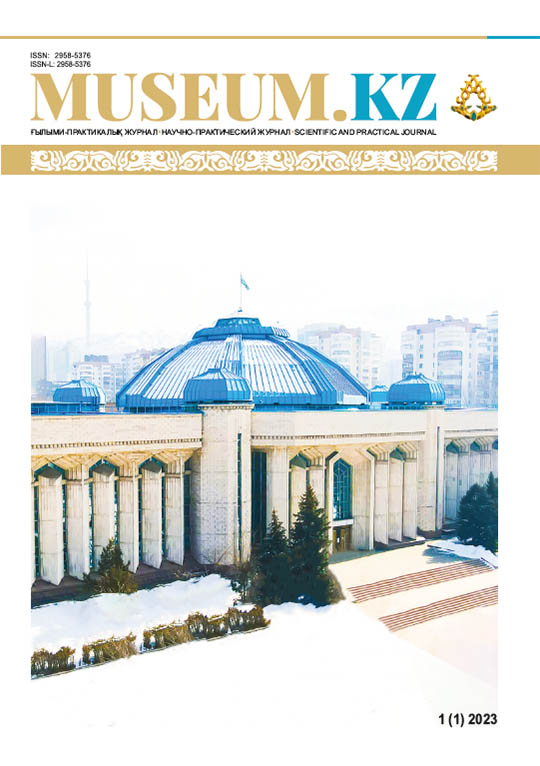A NEW EMISSION CENTER AT THE END OF THE XIII CENTURY – THE CITY OF THE KAIDU KHANATE
DOI:
https://doi.org/10.59103/muzkz.2023.01.08Abstract
The purpose of this work is to clarify the attribution of unique copper halyards of Chagatai
Khanate with zoomorphic image, as well as to clarify the medieval name of the settlement, which is now an
archaeological monument of Aktobe, located near the village of Besagash in Zhambyl region of Kazakhstan.
Examination of two new specimens of copper falses of Chagatai Khanate depicting a beast to the right has
been carried out. It established that in their circular legends the year of issue - 68(9) A.D. / 1290-1291 A.D.
- specified in figures. In addition, silver dirhams with the hitherto unknown name of the mint, Parkend /
Barkend / Berkend, found at the Aktobe site where these copper coins were found. Study of written sources
revealed that near Talas River King Getum passed I the settlement with such name in 1255 on his way
back from Mungka Caan’s stake. The mint that marked the discovered dirhams and the toponym from the
written narrative source “History of Armenia” by Kirakos Gandzaketsi are identical, despite the fact that in
one case they are given in Arabic letters, in the other - in Armenian letters. Another medieval settlement on
Getum’s route has been located and the archaeological site of Aktobe near Besagash in Zhambyl province
has been identified. In addition, a new mint of the Chagataid Khanate discovered near the modern city of
Taraz, on one of the Silk Road roads. Consequently, the place of minting falses has been established with
certainty. They issued by a medieval emission centre located in Parkend / Berkend.
Маterials and methods. Materials for the article were copper falsies of the Chagataid Khanate with
a zoomorphic image, discovered during a numismatic expedition near the village of Besagash, Zhambyl
region (archaeological site of Aktobe). General methods of numismatic research were used: metrology,
topography, stamp analysis, etc.







